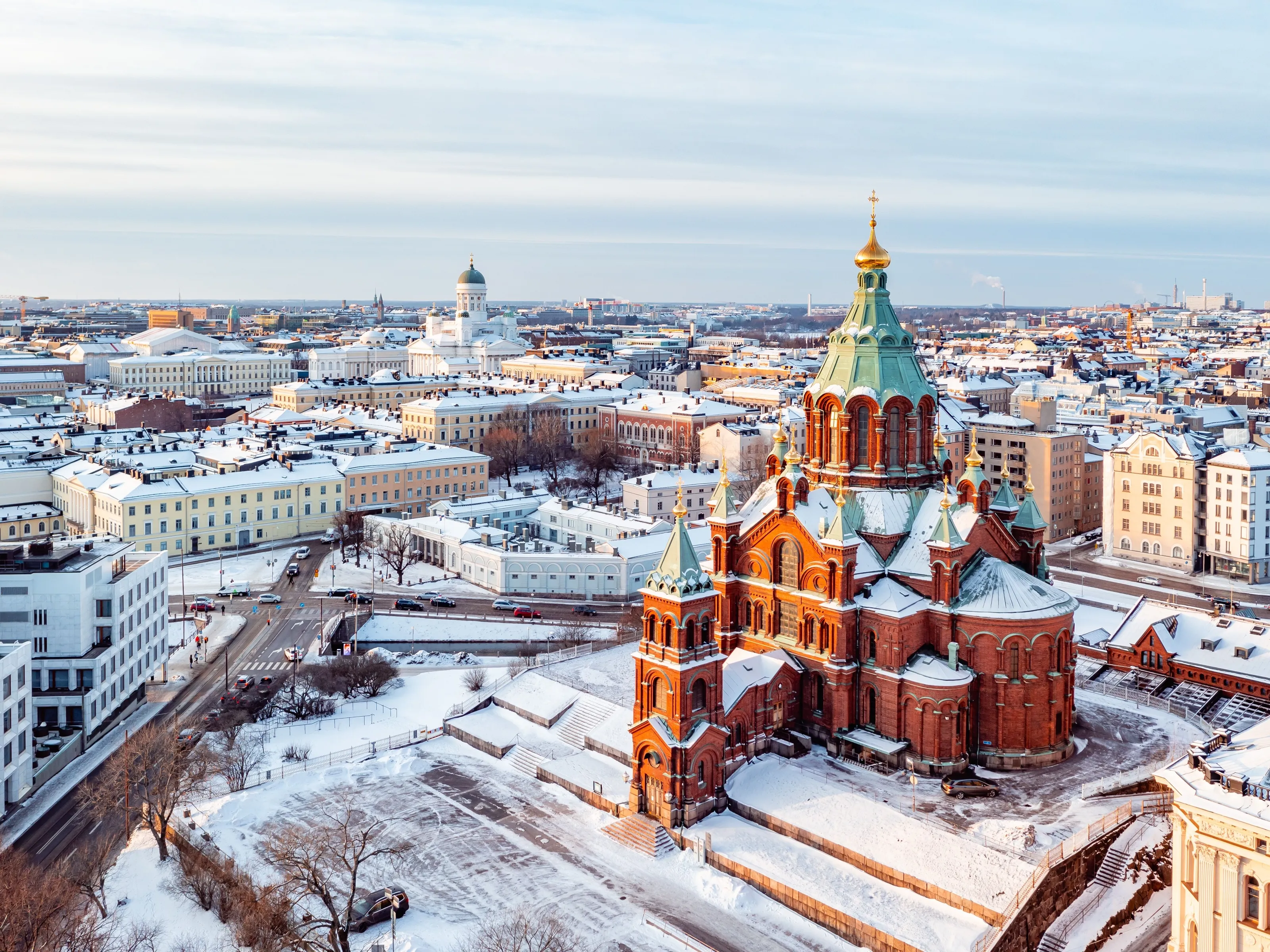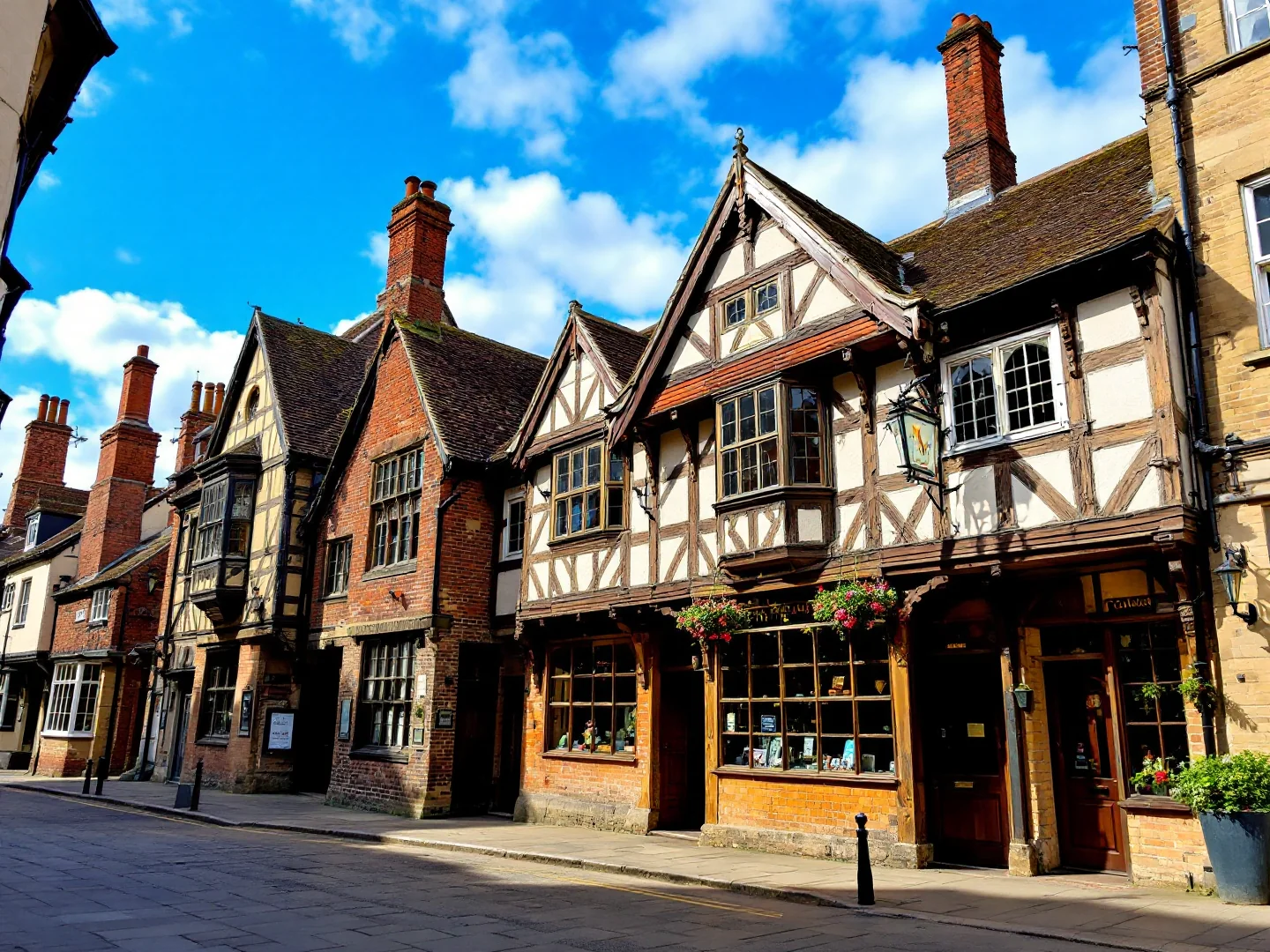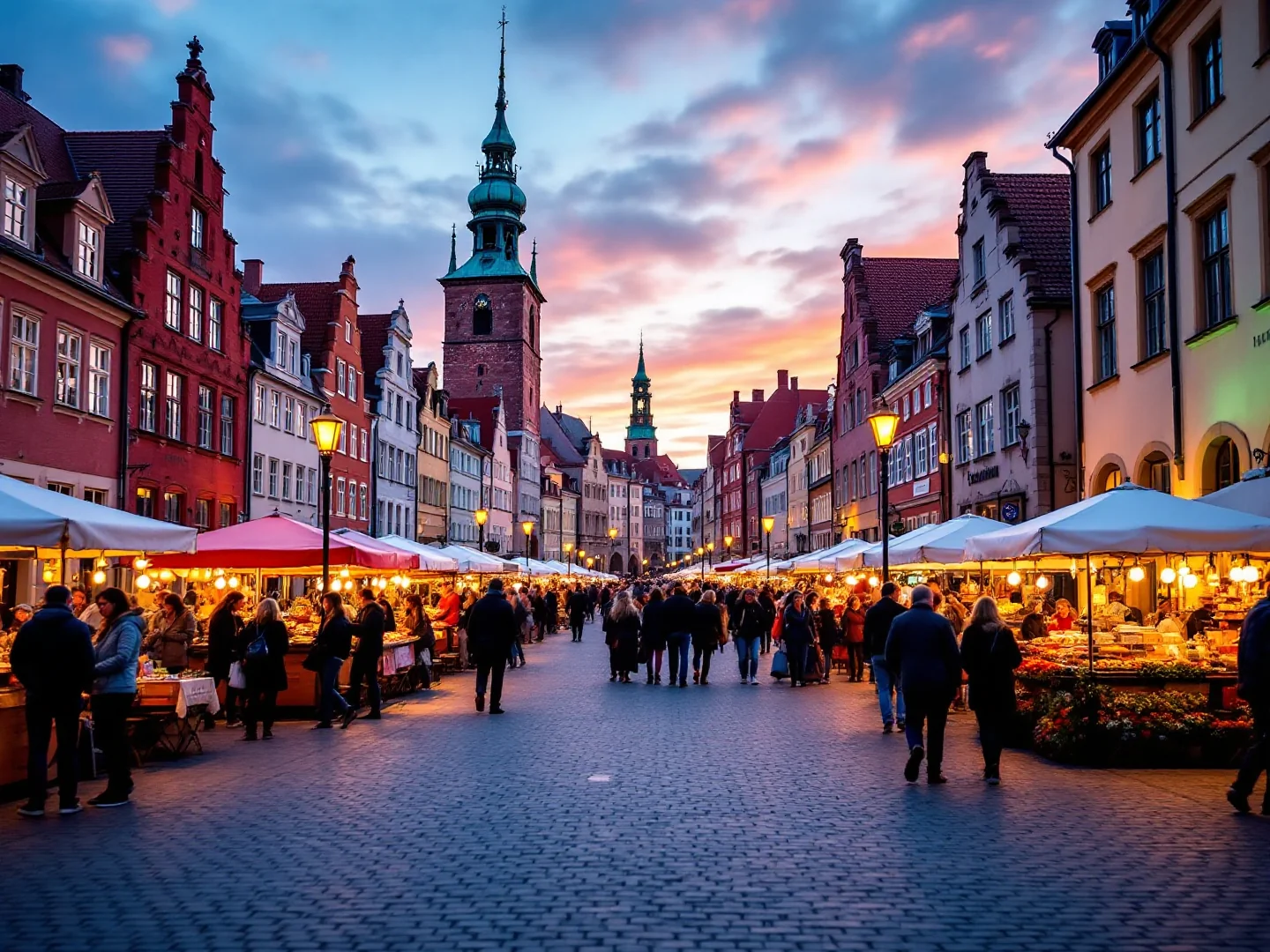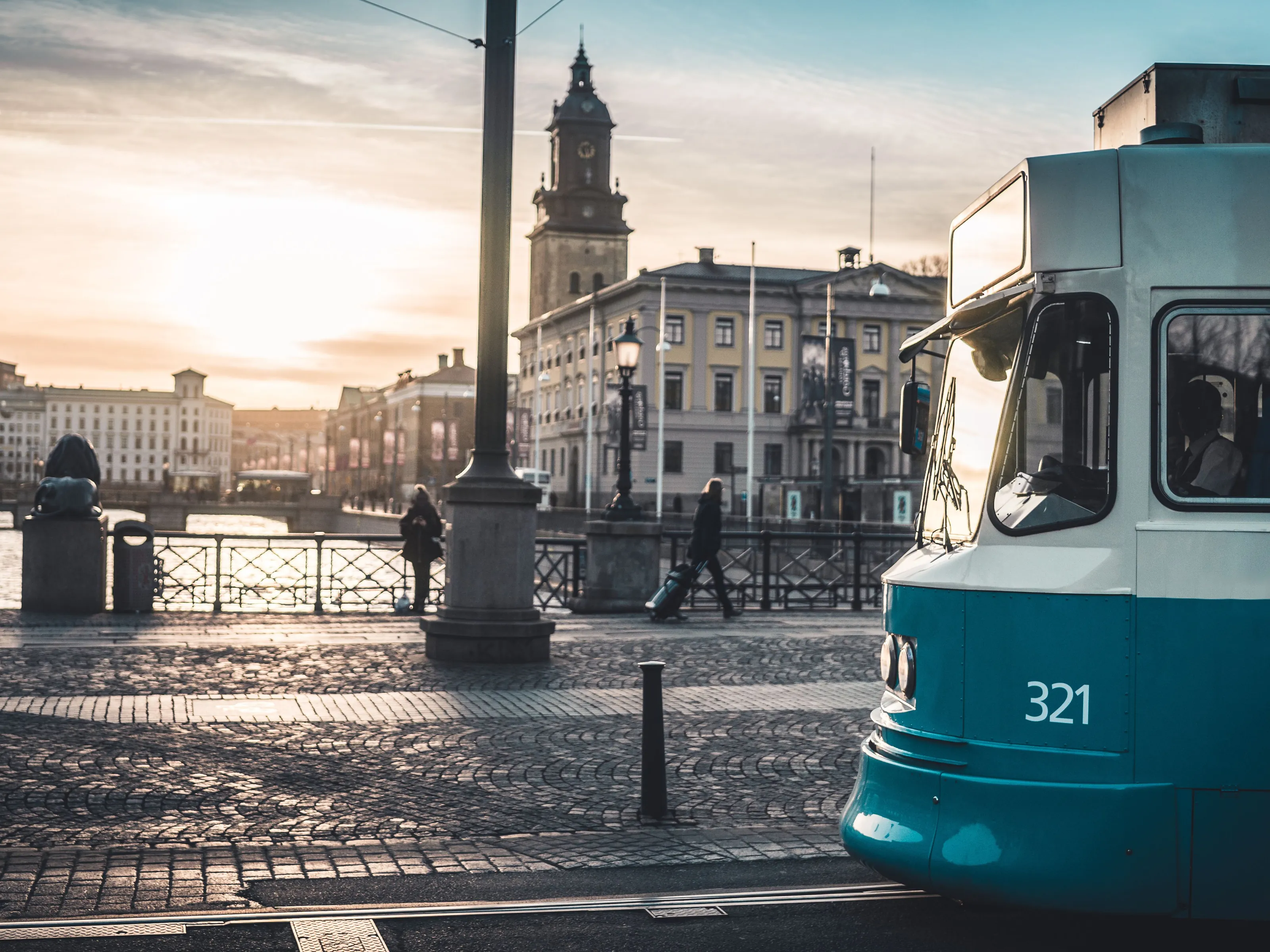Why Visit Gdańsk?
Gdańsk captivates as Poland's Baltic jewel where colorful Hanseatic facades line the Long Market, amber shops glitter with 'Baltic gold,' and WWII history marks Westerplatte where the war began. This port city (pop. 470,000) rebuilt its Gothic Old Town from wartime rubble using historical paintings as blueprints—Neptune Fountain anchors Długi Targ's photogenic merchant houses, St.
Mary's Basilica's 25,000-capacity nave dominates skylines, and Golden Gate welcomes visitors to Główne Miasto (Main Town). Gdańsk's story intertwines with Polish independence—medieval Hanseatic League wealth, Teutonic Knights' rule, Gdańsk Crane loading ships since 1444, and Solidarity movement birthplace at Gdańsk Shipyard where Lech Wałęsa led strikes toppling communism. Museums span European Solidarity Centre (about 35 PLN/~$9) preserving strike history to Museum of the Second World War (about 32 PLN/~$8 free Tuesdays) exploring Polish perspectives.
Motława River promenades connect reconstructed granaries converted to restaurants, while amber shops dominate Mariacka Street—the Baltic region produces around 70-90% of the world's amber, and Gdańsk is one of the main historic trading centres for this 'Baltic gold.' Day trips reach Sopot's pier (longest in Europe, 511m) and sandy beaches 15 min north by train, or Malbork Castle (45 min, UNESCO), largest brick Gothic castle globally. The food scene celebrates pierogi, żurek sour rye soup, and Baltic herring—Bar Mleczny milk bars serve authentic cheap eats (PLN 15-25/$3–$5 meals). Visit May-September for 15-23°C weather and Baltic beach season, though shoulder seasons offer fewer crowds.
With English-speaking youth, walkable Old Town, dirt-cheap prices ($43–$76/day), and coastal relaxation plus history, Gdańsk delivers underrated Polish charm with Hanseatic elegance.
What to Do
Historic Main Town
Long Market (Długi Targ) & Neptune Fountain
Photogenic pedestrian street lined with colorful Hanseatic merchant houses (rebuilt from WWII rubble using historical paintings). Neptune Fountain (1633) is Gdańsk's symbol. FREE to stroll. Surrounded by Artus Court, Golden House, and outdoor terraces. Best morning (9–11am) or evening (6–8pm) for photos without crowds. Central hub—everything connects here.
St. Mary's Basilica
Massive brick Gothic church—one of world's largest brick churches, capacity 25,000. FREE entry. Climb 400+ steps to tower for panoramic views (10 PLN/$2). Astronomical clock, Gothic art, war damage preservation. Allow 1 hour. Best morning (10am–12pm). Quiet and atmospheric—less touristy than Main Market. Adjacent to Mariacka amber street.
Gdańsk Crane & Motława Promenade
Medieval port crane (1444)—largest in medieval Europe, loaded ships for centuries. Now maritime museum (entry ~15 PLN). Riverside promenade lines Motława River with restaurants in converted granaries. FREE to walk. Best evening (sunset 7–9pm summer) when buildings lit. Romantic waterfront atmosphere. 10-minute walk from Long Market.
History & Solidarity
European Solidarity Centre
Museum preserving Solidarity movement that toppled communism. Entry about 35 PLN (~$9 for standard ticket, audio guide included). Interactive exhibits document 1980 shipyard strikes and Lech Wałęsa's leadership. Emotional, inspiring. Takes 2–3 hours. Excellent English descriptions. Best morning (9–11am) when fresh to absorb heavy history. Outside city center—take tram. Must-visit for understanding modern Poland.
Museum of the Second World War
Massive modern museum exploring Polish WWII experience (Gdańsk where war began at Westerplatte). Entry about 32 PLN (~$8); free on Tuesdays, but lines are long that day. Extensive exhibits—3-4 hours minimum. Polish perspective differs from Western narratives. Sobering, comprehensive. Best morning to afternoon (plan 3+ hours). Near main station. Essential for history buffs.
Westerplatte Monument
Peninsula where WWII began—Polish garrison resisted German attacks September 1939. FREE park with monuments, bunkers, plaques. 30 minutes from center by bus #138 or tourist boat. Takes 1–1.5 hours walking memorial area. Best afternoon (2–4pm). Somber pilgrimage site. Combine with boat ride for scenic approach. Important historical site.
Amber & Beach Life
Mariacka Street & Amber Shops
Prettiest street in Gdańsk—cobblestones, Gothic townhouses, amber jewelry shops line the lane. FREE to wander. The Baltic region produces around 70-90% of the world's amber, and Gdańsk is one of the main historic trading centres for this 'Baltic gold.' Shops sell amber jewelry (negotiate—start 50% of asking). Best morning (10am–12pm) for photos in soft light. Gargoyle waterspouts, restored beauty. Takes 30 minutes. Between St. Mary's and river.
Sopot & Baltic Beaches
Seaside resort town 15 minutes from Gdańsk by SKM train (4 PLN). Europe's longest wooden pier (511m, small entry fee). Sandy beaches, Belle Époque architecture, Monte Cassino Street pedestrian promenade. Best summer (June–August) for swimming—water cold even then (16-18°C). Day trip from Gdańsk or base yourself here. Upscale feel, popular with Poles. Combine with Gdynia for Tri-City circuit.
Gallery
Travel Information
Getting There
- Airports: GDN
Best Time to Visit
June, July, August, September
Climate: Cool
Weather by Month
| Month | High | Low | Rainy days | Condition |
|---|---|---|---|---|
| January | 6°C | 2°C | 13 | Wet |
| February | 7°C | 2°C | 12 | Good |
| March | 8°C | 1°C | 14 | Wet |
| April | 13°C | 3°C | 3 | Good |
| May | 14°C | 7°C | 15 | Wet |
| June | 20°C | 14°C | 8 | Excellent (best) |
| July | 22°C | 14°C | 11 | Excellent (best) |
| August | 24°C | 16°C | 8 | Excellent (best) |
| September | 20°C | 12°C | 11 | Excellent (best) |
| October | 14°C | 9°C | 13 | Wet |
| November | 9°C | 5°C | 10 | Good |
| December | 4°C | 1°C | 10 | Good |
Weather data: Open-Meteo Archive (2020-2024) • Open-Meteo.com (CC BY 4.0) • Historical avg. 2020–2024
Budget
Excludes flights
Visa Requirements
Schengen Area
💡 🌍 Traveler Tip (November 2025): Best time to visit: June, July, August, September.
Practical Information
Getting There
Gdańsk Lech Wałęsa Airport (GDN) is 12km west. Bus 210 to center costs PLN 4.80/$1 (30 min). Taxis PLN 60-80/$14–$18 Trains from Warsaw (3hr, PLN 60-150/$14–$35), Kraków (6hr, PLN 80-180/$18–$41). Gdańsk Główny station is central—10 min walk to Main Town. Regional trains connect Sopot, Gdynia forming Tri-City.
Getting Around
Gdańsk Main Town is compact and walkable (20 min to cross). Trams and buses cover wider areas (PLN 3.80/$1 single, PLN 13/$3 24hr ticket). Buy from machines—validate on board. Tri-City regional trains (SKM) connect Gdańsk-Sopot-Gdynia (PLN 4/$1 every 10-15 min). Most attractions walkable. Bikes available.
Money & Payments
Polish Złoty (PLN). Exchange $1 ≈ PLN $51 ≈ PLN 4.2. Cards accepted in hotels and restaurants. Cash needed for milk bars, markets, and small shops. ATMs plentiful—avoid Euronet. Tipping: 10% expected in restaurants. Very affordable prices make PLN go far.
Language
Polish is official. English spoken by younger people and in tourist areas. Older generation may only speak Polish. Signs often Polish-only. Learning basic phrases helpful: Dziękuję (thanks), Proszę (please). Gdańsk was German Danzig until 1945—older architecture reflects German heritage.
Cultural Tips
Pierogi culture: try various fillings (ruskie, mięsne, sweet). Bar Mleczny (milk bars): communist-era canteens serving cheap authentic Polish food. Vodka: Poles drink neat and chilled, traditional toasts. Amber: 'Baltic gold,' Gdańsk specializes—shops everywhere, negotiate prices. WWII history: sensitive topic, Polish perspectives differ from Western narratives. Solidarity: pride in toppling communism. Baltic beaches: cold water even summer (16-18°C), windy, bring layers. Sunday: shops closed, restaurants open. Remove shoes when entering Polish homes. St. Dominic's Fair: August, huge open-air market. Dress casual.
Perfect 2-Day Gdańsk Itinerary
Day 1: Main Town & History
Day 2: Solidarity & Sopot
Where to Stay in Gdańsk
Główne Miasto (Main Town)
Best for: Long Market, hotels, restaurants, museums, historic core, tourists
Stare Miasto (Old Town)
Best for: Quieter, Great Mill, St. Catherine's Church, local atmosphere, less touristy
Sopot (Tri-City)
Best for: Baltic beaches, pier, resort town, nightlife, 15 min train, summer vibe
Wrzeszcz
Best for: Residential, Günter Grass connections, authentic Gdańsk, local markets
Frequently Asked Questions
Do I need a visa to visit Gdańsk?
What is the best time to visit Gdańsk?
How much does a trip to Gdańsk cost per day?
Is Gdańsk safe for tourists?
What are the must-see attractions in Gdańsk?
Popular Activities
Top-rated tours and experiences in Gdańsk
Ready to Visit Gdańsk?
Book your flights, accommodation, and activities






